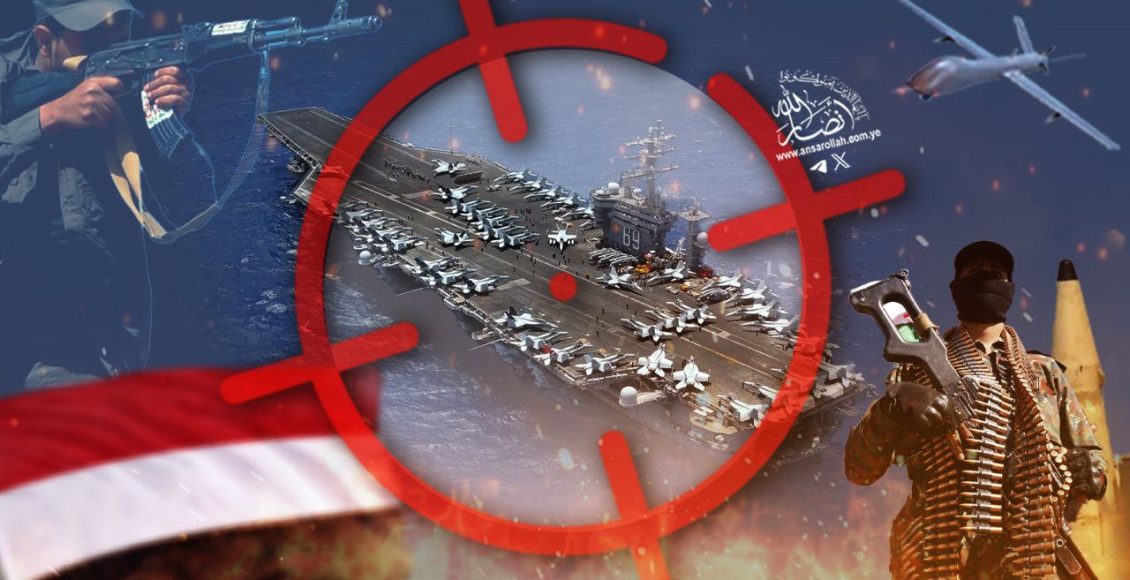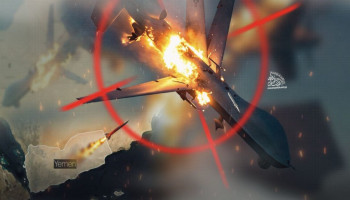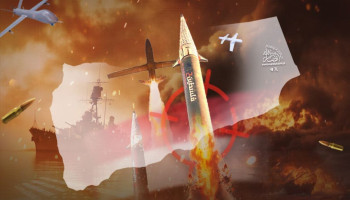As the world stands astonished by unprecedented shifts in the balance of power, Yemen, under the leadership of Sayyid Abdul-Malik Badruldeen al-Houthi, emerges as a living example of an unwavering will that knows no limits. On both the regional and international stages, this small country—modest in its geographic size but monumental in its resistance—stands at the forefront—not merely as a supporter of the Palestinian cause, but as an inseparable part of Palestine itself.
Under the banner of jihad, the Yemeni people have shown that solidarity goes beyond rhetoric—it is embodied in decisive actions. These actions include the disruption of Israeli and American navigation and the targeting of strategic points deep within Zionist territory.
In the Red Sea—a critical arena for strategic military confrontations—the Yemeni Armed Forces have demonstrated advanced tactics that have shattered the prestige of dominant powers. These operations have challenged the perceived invincibility of both America and the Zionist occupation, raising essential questions about their future role in the region.
Yemen’s position is not merely a reactive stance but rather the manifestation of a clear vision and a sustainable strategy rooted in the sacrifice for justice. Step by step, Yemen's growing effectiveness is paving the way for a new phase in the struggle against the Zionist entity embedded within the region.
Lessons in Will and Tactics
The Red Sea has emerged as a battleground where unexpected defeats are inflicted upon the world's greatest powers. On the undulating waves of the salty waters, a true battle unfolds, with Yemen as the protagonist—a nation often underestimated by major powers but now reversing the odds with unshakeable resolve.
American warships, brimming with cutting-edge defensive and offensive technology, patrolled the Red Sea, seemingly engaged in routine missions. Aboard the aircraft carrier Harry S. Truman, naval commanders sat within an operations room illuminated by screens and flashing lights, analyzing targets with the usual expectation of smooth, controlled operations. However, far from this seemingly secure environment, Yemeni ballistic missiles were being readied for launch from Yemen’s rugged terrain of mountains, valleys, and plains.
The turning point came when, in a display of unprecedented precision, Yemeni missiles launched, penetrating American air defense systems. These calculated strikes were executed with a precision that instilled fear in the enemy. The missiles, moving at lightning speed, were accompanied by drones whose faint wing beats seemed almost audible just before impact. For the first time in decades, the world's most formidable military force experienced disarray in the face of an unforeseen threat.
Amidst the chaos in the American Navy’s operations room, the command rang out: “Deploy the Phalanx systems.” These rapid-response defense weapons sprang into action to intercept the missiles, but it became evident that even these highly acclaimed systems were powerless against Yemen's sophisticated tactics. The explosions’ glow danced on the sea’s surface, revealing a stark new reality: Yemen had evolved from merely an adversary to a pioneer in military strategy.
Disrupting Navigation and Redrawing Trade Routes
Across the globe, observers followed the unfolding events with a mixture of disbelief and intrigue. Research centers and international media outlets reported with astonishment: “Yemenis have altered global maritime trade routes!” “Great powers face immense economic costs.” “A severe lack of readiness within the American Navy.” Each report echoed the same truth: the Yemeni people, united behind their leader Sayyid Abdul-Malik Badruldeen al-Houthi, have taught the world a lesson in steadfastness.
In a candid assessment, retired U.S. Navy General Bruce Stubbs stated in a recently published report, “We cannot afford to disregard the Yemeni lessons any longer. Our failure here transcends mere military defeat—it challenges our global stature.” His words reverberated through military analysis forums, though they seemed faint compared to the humiliation faced by the world's most powerful military.
Meanwhile, in the Mediterranean—where the Zionist entity presumed safety—their sense of security was shattered as Yemeni forces launched missiles deep into occupied territory, sending a clear message: “We are no longer just a supportive political voice; we are present on the battlefield.” Warnings issued to major airlines about the dangers of flying to “Tel Aviv” turned the skies over occupied Palestine into an area fraught with uncertainty and fear.
The story concludes with a profound realization—one where pride in Yemeni capabilities intertwines with surprise at the colonial powers’ vulnerability. Analysts ponder a pressing question: “Can a nation with such determination and resolve ever be defeated?” Yemen has proven, through an extraordinary narrative shaped by patience and faith, that wars are not solely determined by firepower but by the unyielding will that triumph over material strength.
Weaknesses Redrawing the Future of Global Dominance
As the Red Sea’s waves roared, the USNS Big Horn emerged as a new focal point in the ongoing strategic upheaval. In a scene reminiscent of military chronicles, the Yemeni Armed Forces executed a bold surprise, defying American expectations by striking a crucial supply ship within the American fleet. This strike was not merely an isolated tactical move but a strategic message heralding a new era of challenges.
The USNS Big Horn, engaged in a logistical mission to support the aircraft carrier USS Abraham Lincoln near the coast of Oman in September 2024, suffered damage despite the American Navy's attempts to conceal the incident, it revealed that the world’s strongest navy was not immune to Yemeni attacks, which appeared to defy conventional concepts of naval warfare.
Speculations arose, pointing to Yemen’s progress not as a mere military coincidence but as a strategic will aimed at altering regional power dynamics, Analysts estimated that successfully targeting such a large and well-organized ship typically requires a combination of six cruise missiles supported by an anti-ship ballistic missile. Nevertheless, the Yemeni Armed Forces managed to accomplish this, reaffirming their capability to confront asymmetrical conflicts effectively.
What are the implications for America? Analysts emphasize that the USNS Big Horn incident is not an isolated case. A March 2025 Defense News report underscored the logistical challenges and crew shortages affecting the American fleet. Despite the U.S. administration’s continuous display of global dominance, these developments expose unprecedented weaknesses in its operational capabilities.
In a world dominated by rapid transformations, Yemen emerges as a unique model, committed to defending its rights and challenging the most powerful armies using the simplest means. It is a triumph of will and intellect over material force, conveying that regional balance no longer solely belongs to traditional power but reflects thoughtful strategies that transcend conventional boundaries.







